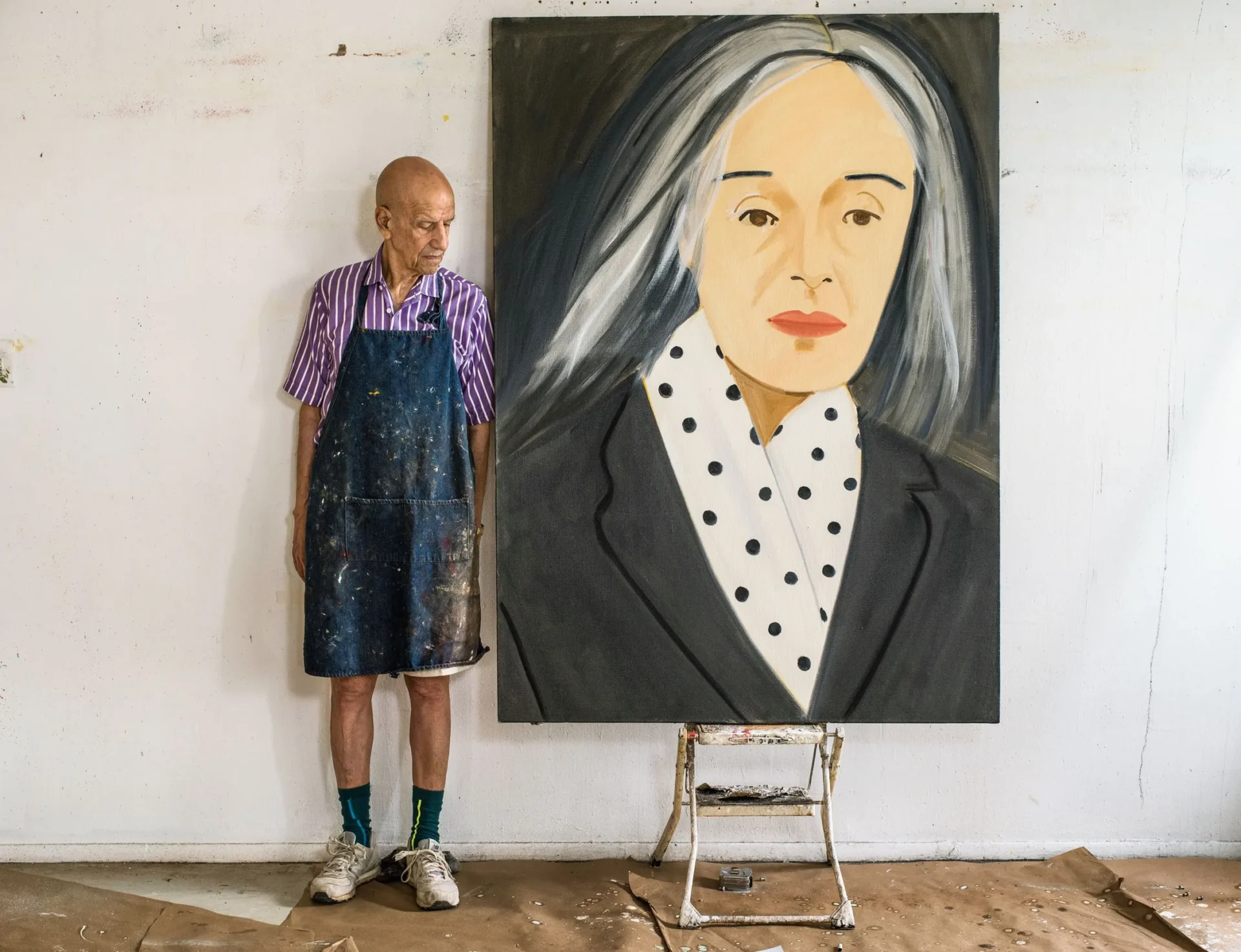Alex Katz’s: Life in Art

His paintings make us see the world the way he sees it, clear and up close, with all but the most essential details pared away.
By Calvin Tomkins
At Cooper, I went from someone who was basically incompetent to being the best painter in the school.
Alex Katz
It took him ten years to find his way. Living in cheap downtown lofts, supporting himself by working for a frame-maker three days a week, he experimented with small paintings—New York street scenes, Maine landscapes, still-lifes, and figure paintings adapted from amateur family photographs. He wanted to paint in an open style, like Jackson Pollock, with no fixed outlines or contained forms, “but I didn’t know how to do it,” he said. “I destroyed a thousand paintings, just tore them up and threw them in the fireplace.” In the mid-fifties, he switched to small cut-paper collages that were clearly influenced by Matisse’s late work. For a three-month period in 1957, his self-confidence faltered. “I kept making paintings, and they were good, but they were boring,” he said. “It was the only time in my life when a thing like that happened.” What pulled him out of it was deciding to paint what he called “specific” portraits, recognizable images of real people—a decision that coincided with meeting Ada Del Moro.
